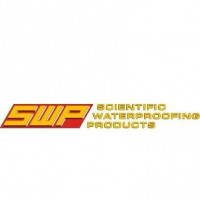-
Australia
Copyright © 2025 Powered by BCI Media Group Pty Ltd
Confirm Submission
Are you sure want to adding all Products to your Library?
Contact Detail
01 Aug 2023 by DRIZORO Scientific Waterproofing Products

Permanent formwork has gained widespread popularity among building professionals due to its numerous advantages over temporary wood framework.
Made up of specially designed braces and moulds, the permanent formwork in your site securely holds concrete until it sets, hardens and takes shape into the required dimensions. It also supports and strengthens the structure of your building, while allowing you to minimise waste during construction.
It’s no wonder why permanent formwork plays a crucial role in most projects today.
But did you know that to keep your permanent formwork durable and functional, waterproofing at the cold joint is essential?
Many Architects, Engineers and Builders often overlook this critical aspect. So let us walk you through the importance of waterproofing permanent formwork at the cold joint base.
Read on to also discover the right waterproofing solutions, as well as the steps involved in waterproofing the base both before and after permanent formwork is erected.

3 reasons to waterproof permanent formwork at the cold joint base
In Australia, several reputable manufacturers like Dincel, Rise Products, Clearform and Zego offer quality permanent formwork solutions.
The point where these permanent formwork walls meet the floor is called the cold joint base.
While typically the cold joint base is linear, closely joined and bonded, there are instances where small voids may still arise due to inadequate compaction during the concrete pouring process.
Because such small voids can develop into cracks and lead to potential water-related issues, the cold joint base has become an important consideration when waterproofing permanent formwork.
To understand better, here are 3 key reasons why you should waterproof permanent formwork at the cold joint base.
Waterproofing the cold joint base ensures water tightness, preventing water from seeping into the joint and saving you from dealing with costly maintenance and repairs down the line.
Through the implementation of proper waterproofing measures at the cold joint base, you can establish a protective barrier that mitigates the risk of moisture penetration and the damage it brings.
Waterproofing helps preserve your structure’s durability, ensuring it can consistently bear loads and effectively withstand external forces to keep everyone on the site safe and sound.

Best practices for waterproofing permanent formwork at the cold joint base
To safeguard permanent formwork against water damage and ensure its longevity, architects and construction professionals must employ the right waterproofing products and techniques.
A) Ideal waterproofing products to use
At Scientific Waterproofing Products (SWP), we offer a wide range of Drizoro products that are made from high-quality raw materials and backed by a 10-year product warranty to help you effectively waterproof cold joints in permanent formwork.
The solutions we deliver include:
Just take note: All the products mentioned can only be applied to a wet substrate (i.e. saturated with water). The information provided above must also be used in conjunction with the appropriate technical data bulletins and material safety data sheets available from SWP’s office or website.
B) Effective methods to waterproof permanent formwork at the cold joint base
To ensure optimal protection for the cold joint section, it is advisable that the concrete onto which the permanent formwork will be placed is waterproofed prior to the construction of the permanent formwork.
However, in many cases, the permanent formwork is already installed before the cold joint is taken into account – so the waterproofing has to be done afterwards.
Regardless of whether you have assembled your building’s permanent formwork or not, our team at SWP has prepared a comprehensive set of instructions ready to guide you in waterproofing permanent formwork at the cold joint base.
Waterproofing the concrete floor before building the permanent formwork
Uneven surface: Wet the surface and apply MAXJOINT ELASTIC to the external edges of the area covered by the guide track at a thickness of no less than 6 mm x minimum width of 15 mm. Then, place the guide track and secure it.
Waterproofing after the permanent formwork has been assembled and the concrete was put in
Allow to cure overnight, thoroughly wet the area, and apply a second coat at a rate of 1 mm thick, covering the mesh. In the event of an active leak at the floor/wall joint, use MAXPLUG to stop the water flow and proceed as per the wall/floor joint recommendation.
If you’d like further guidance on our waterproofing products, simply speak to your local Australian waterproofing specialists.

Get the best waterproofing products for your next project with SWP
At Scientific Waterproofing Products, our team is here to provide you with the right solutions for your unique situation. We offer a wide range of Drizoro cement-based waterproof coatings for all of your maintenance and restoration requirements.
If you want to learn more about our cement-based waterproofing products and why they are the right solution for your permanent formwork, contact us today! You can also check out a list of local Drizoro resellers and applicators here.
As always, we’re committed to providing you with the right waterproofing solution for any water-related problem or application.



